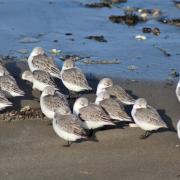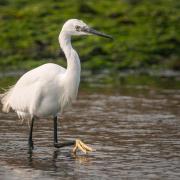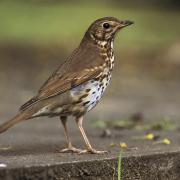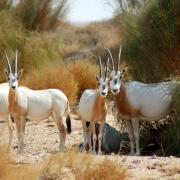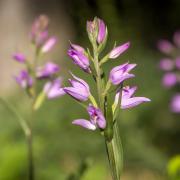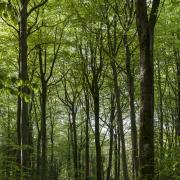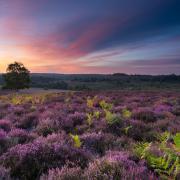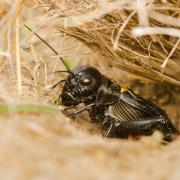Find out how to spot one of the county’s most fascinating birds, the Nightjar, or ‘Goatsucker’ as it used to be known, with Outdoor Ranger Laura Baker
The Nightjar is a species of bird shrouded in mystery and old folk tales. You may think I made up its alternative name, ‘Goatsucker’, but it’s completely true that villagers gave it that title because they used to think that, at night, the Goatsucker would visit their goats and steal their milk - a strange accusation of which the poor Nightjar is entirely innocent.
As winter turns to spring, the Nightjars return from their African vacation to breed in the New Forest and, happily, there have been 22 males spotted at the National Trust’s Foxbury site.
Laura Baker, Outdoors Ranger for the Trust, was one of the lucky few who carried out the last survey of Nightjars at Foxbury. She’s been working for the Trust since 2011, having been a ranger at Kingston Lacy in Dorset for two years before moving to the Forest.
“I’ve always been in heathland management, before then I was volunteering for the RSPB at Arne in the Purbecks. It was the next step for me to move to the New Forest and a National Park environment.”
In a chance meeting with a volunteer at the Arne reserve, Laura was told about volunteering full time: “I volunteered for them for nine months, and they paid for my tractor and chainsaw training. That was my first step into getting a practical job in rangering,” she explains.
At Foxbury
Foxbury was bought in 2005 by the Trust as a large, commercial plantation of 150 hectares. In the last 100 years the site had become covered in commercial conifer, there were some patches left as open heathland, but by the time the Trust purchased the estate, it was completely covered. Now the Trust wants to restore the heathland that was there before.
“Between 2005 and 2009 we cleared all the conifers,” says Laura. “Along with a large understorey of Rhododendron. It’s really tough to get rid of. Big machines were used to clear it and a lot of work is needed to keep the regeneration back.”
The Trust has been able to create a mixture of the two habitats, woodland and heath, which is the perfect setting for arriving Nightjars. Laura points out that monitoring the wildlife is a major part of restoring the site: “As it develops it is really interesting to see the species that colonise the site. We’re looking for species found on neighbouring commons to move in to Foxbury.”
Bird spotting
For the Trust, the Nightjars have been one of the key species to move onto the site. Across heathlands in the south of England Nightjars are common during the summer, especially on freshly cleared sites like Foxbury.
In 2006 when a bird survey was carried out as part of an environmental impact assessment, no Nightjars were found, so it’s great to see that 22 breeding pairs have moved in since then.
“There are particular sites at Foxbury that are better than others,” points out Laura. “I would like to do more research to find out why. Our bracken is quite thick in some areas, so it may be that it gives them the shelter they need.”
As well as the Nightjars, two other species of bird Laura is hoping to see more of in Foxbury are the Dartford Warbler and the Woodlark: “These are birds that are very vulnerable because they nest on the ground – so they really do themselves no favours in terms of conservation,” she continues.
Of the three however, it’s the Nightjars people really want to see.
“I think people are quite inspired by them because they are different. They’re mysterious and only come out at night. They have a lot of tradition and superstition attached to them.”
The site at Foxbury remains closed to the public for now, as work continues to restore the heath and woodland. However, there is still plenty of opportunity to explore: “We open it up for various volunteering, educational and family events throughout the year,” says Laura. “We want people to enjoy it, but at the same time we have a duty to protect the wildlife that’s coming in.” One of this year’s highlights will be a series of evening Nightjar guided walks between May and July.
How to spot a Nightjar
• The time of year to see them is mid May to August.
• The best place is where you have an open area of heathland but with a nice area of pine or scattered trees that provide perches.
• They tend to come out and start ‘churring’ at about 9.30pm, just as it is getting dark.
• The male will be sat in a tree or you will be able to see them flitting to and from trees, defending their territory.
• They are very distinctive; first you’re listening for that ‘churring’ sound (like a mixture of a cricket and a frog), a croaky continuous sound, like a long breath, from a set position.
• When you hear this, it is worth looking up, as it will come from a tree. They can be difficult to see because at this point the bird will be a silhouette. They sit at a 45-degree angle to the branch, so that’s the shape to look for in the trees.
• When they move from tree to tree they stop churring and soar through the sky with their wings in a v-shape above their back. While gliding it will make a flicking, ‘coo-wick’ call.
• You may also hear a sound like hands clapping, when they clap their wings above their backs, this is a territorial display.
• The males have white markings on their wings, like a flash, which they use as part of their display.
• Some say you should take a white handkerchief or piece of paper with you to flap about; it’s supposed to imitate the white flashes on their wings, but there’s no proof it works.
***
READ ON
• Chris van Schaick tries his hand at walking football at South Downs College - Chris van Schaick is walking back to happiness this month as he discovers he can enjoy his favourite sport at a slightly more laid back pace.
• The history of Romsey’s King John’s House - Ever wondered about the history surrounding Romsey’s King John’s House? Claire Pitcher pays a visit to this little known treasure to find out more.






